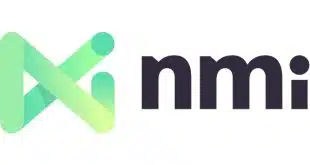By John Stewart
@DTPaymentNews
Merchants are quite familiar with days like “Black Friday” and “Cyber Monday,” but now they’re waking up to a much less joyful day—“Chargeback Tuesday.” It’s the day when merchants, and online sellers in particular, get hit with the highest number of chargebacks they’ll see in a single day this year, according to Chargebacks911, a Clearwater, Fla.-based company that helps merchants manage chargebacks and chargeback fraud.
Historically, the chargeback wave tends to crest early in January as shoppers try to claim refunds on holiday-season credit card purchases. But Chargebacks911 says it has pinpointed the worst pangs of this hangover from the shopping binge to the second Tuesday of the month. This year, that happens to be Jan. 10, leading the company to dub the day “Chargeback Day.”
E-commerce merchants, in particular, will feel the pain, since they’re on the hook for chargebacks consumers file fraudulently to get a refund on merchandise that arrived and was as advertised. Such fraud accounts for as much as 85% of all chargebacks, Chargebacks 911 said Monday. “If you own an online store, Jan. 10 will be the most painful day on your calendar,” said Monica Eaton-Cardone, cofounder and chief operating officer, in a statement. “The single-day losses will wipe out millions of dollars in revenue.”
Annually, online stores lose $40 billion to chargebacks, chargeback fraud, and expenses related to managing both, the company says.
Experts who follow fraud agree January is historically a heavy month for chargebacks, though they have not spotted a specific day as particularly ridden with filings.
“I’ve never heard that there’s a specific day that’s particularly painful, but without question January is the most painful month for chargebacks, which makes sense, since the holiday period is the most active period for shopping,” Julie Conroy, research director at Boston-based Aite Group, tells Digital Transactions News in an email message. “It’s not just buyers’ remorse. Fraudsters are also very active over the holidays, and so we see the fallout of fraudulent charges as well.”
A spokesperson for Chargebacks911 says the company can’t disclose the raw numbers behind its calculations, but says filings follow a seasonal pattern. “After studying and tracking daily chargeback issuance rates over the past several years, we traditionally see the numbers crater during the first five days of April, and then spike to its highest rate approximately 10 days into January (specifically, the second Tuesday of January),” says the spokesman in an email message. “There’s another spike on June 1, but based on e-commerce trends and our analysis of client data, we predict that Jan. 10 will be the day when the greatest number of chargebacks will be filed in 2017.”



